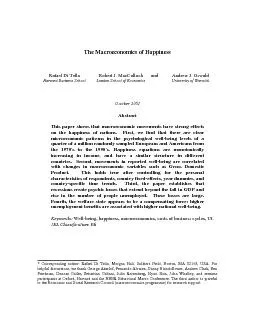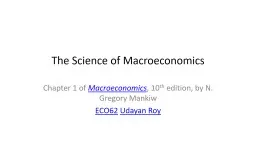PDF-The Macroeconomics of HappinessRafael Di TellaHarvard Business SchoolR
Author : trish-goza | Published Date : 2017-02-05
Corresponding author Rafael Di Tella Morgan Hall Soldiers Field Boston MA 02163 USA Forhelpful discussions we thank George Akerlof Fernando Alvarez Danny Blanchflower
Presentation Embed Code
Download Presentation
Download Presentation The PPT/PDF document "The Macroeconomics of HappinessRafael Di..." is the property of its rightful owner. Permission is granted to download and print the materials on this website for personal, non-commercial use only, and to display it on your personal computer provided you do not modify the materials and that you retain all copyright notices contained in the materials. By downloading content from our website, you accept the terms of this agreement.
The Macroeconomics of HappinessRafael Di TellaHarvard Business SchoolR: Transcript
Download Rules Of Document
"The Macroeconomics of HappinessRafael Di TellaHarvard Business SchoolR"The content belongs to its owner. You may download and print it for personal use, without modification, and keep all copyright notices. By downloading, you agree to these terms.
Related Documents












![[EPUB] - 5 Steps to a 5: AP Macroeconomics 2022 (5 Steps to a 5 Ap Microeconomics and](https://thumbs.docslides.com/903561/epub-5-steps-to-a-5-ap-macroeconomics-2022-5-steps-to-a-5-ap-microeconomics-and-macroeconomics.jpg)

